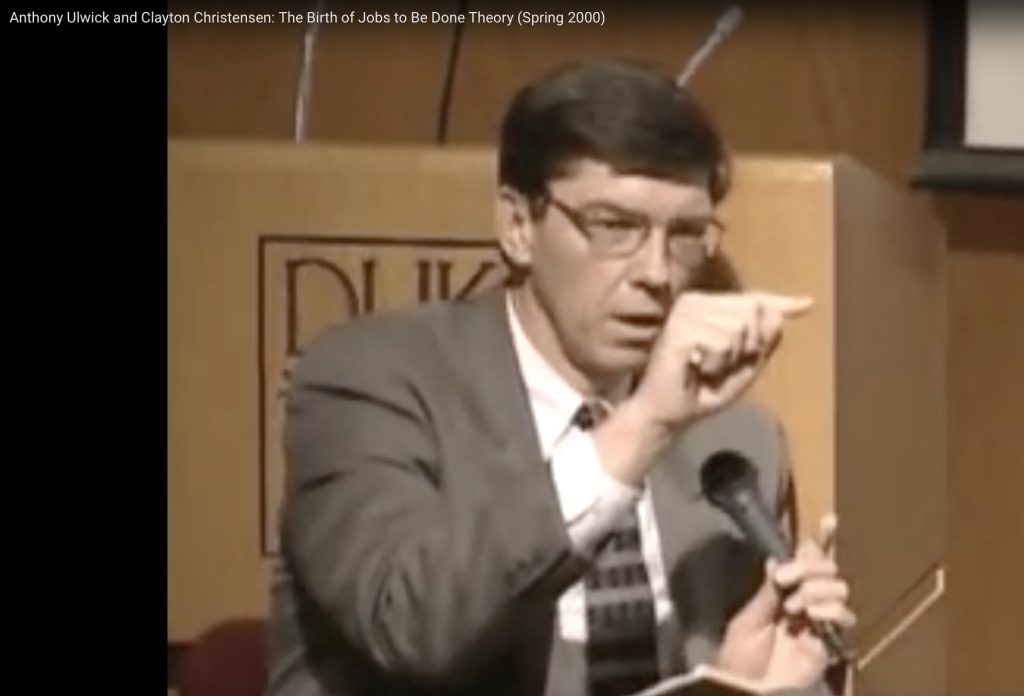Here’s a glimpse of when I introduced professor Clay Christensen to ODI and Jobs-to-be-Done Theory before it was called Jobs-to-be-Done.
In the weeks leading up to the “Solving the Innovator’s Dilemma” event, I had met with Clay a number of times. I had the opportunity to show him our Outcome-Driven Innovation process and several examples of its success. He keyed in on the fact that our ODI process is focused on the “underlying process” the customer is trying to execute.
At the Duke event I put our ODI process into action. I conducted a workshop where we defined and prioritized a set of customer-defined metrics (desired outcome statements) that were tied to a “job” the students were trying to get done. Using the data, we discovered a number of unmet outcomes and discussed how they may be addressed.
Professor Christensen says: “I really like the concept that the Strategyn people brought to us – that people have underlying needs or processes in their lives, that they are solving or addressing in some way right now, and what really understanding the customer needs means is understanding what that underlying process is and how it is that it’s being solved so we can do a better job helping them do what they are already trying to do. And so a model is really quite useful, and being able to put a common model out there, and then using that model look at it from multiple directions. I think we saw further into the future than otherwise you could do if you didn’t have the assistance of the model.”
Clay later introduced this concept in The Innovator’s Solution as Jobs-to-be-Done Theory. The name stuck.
From the Solving the Innovator’s Dilemma conference at Duke, Spring 2000.
Learn more >>
JOBS TO BE DONE: Theory to Practice
by Anthony Ulwick
IDEA BITE PRESS October 25, 2016

